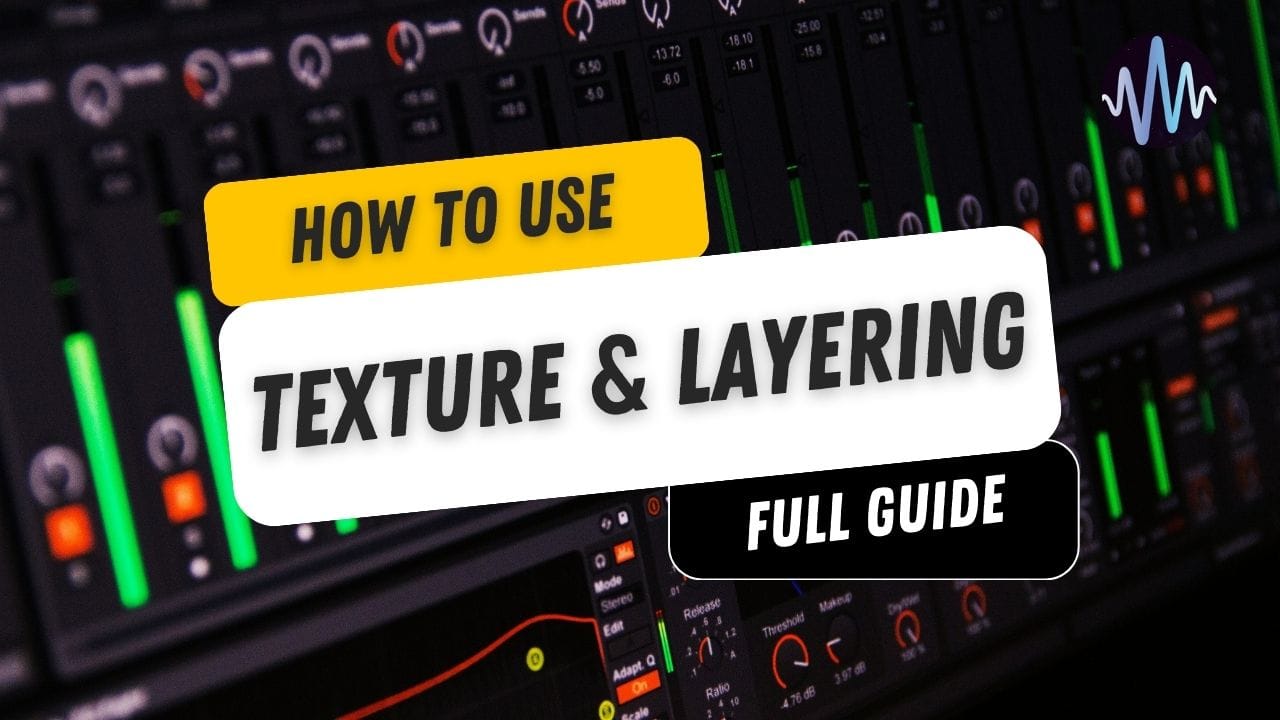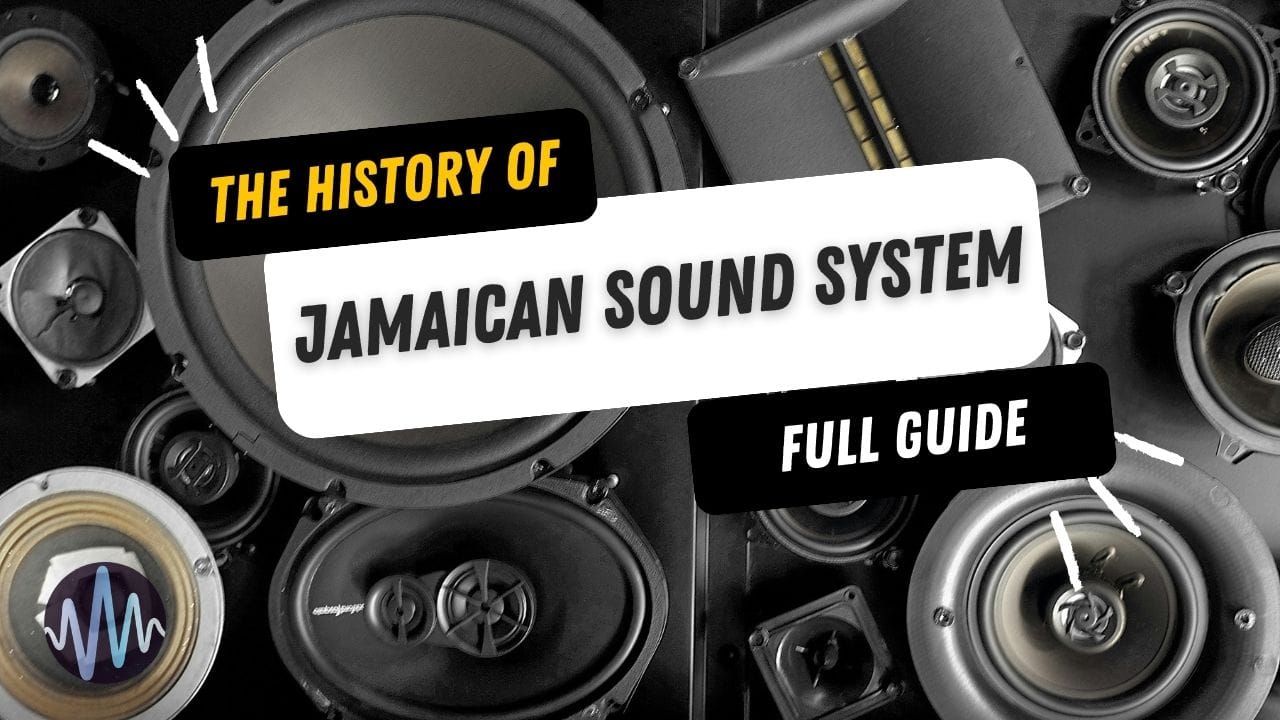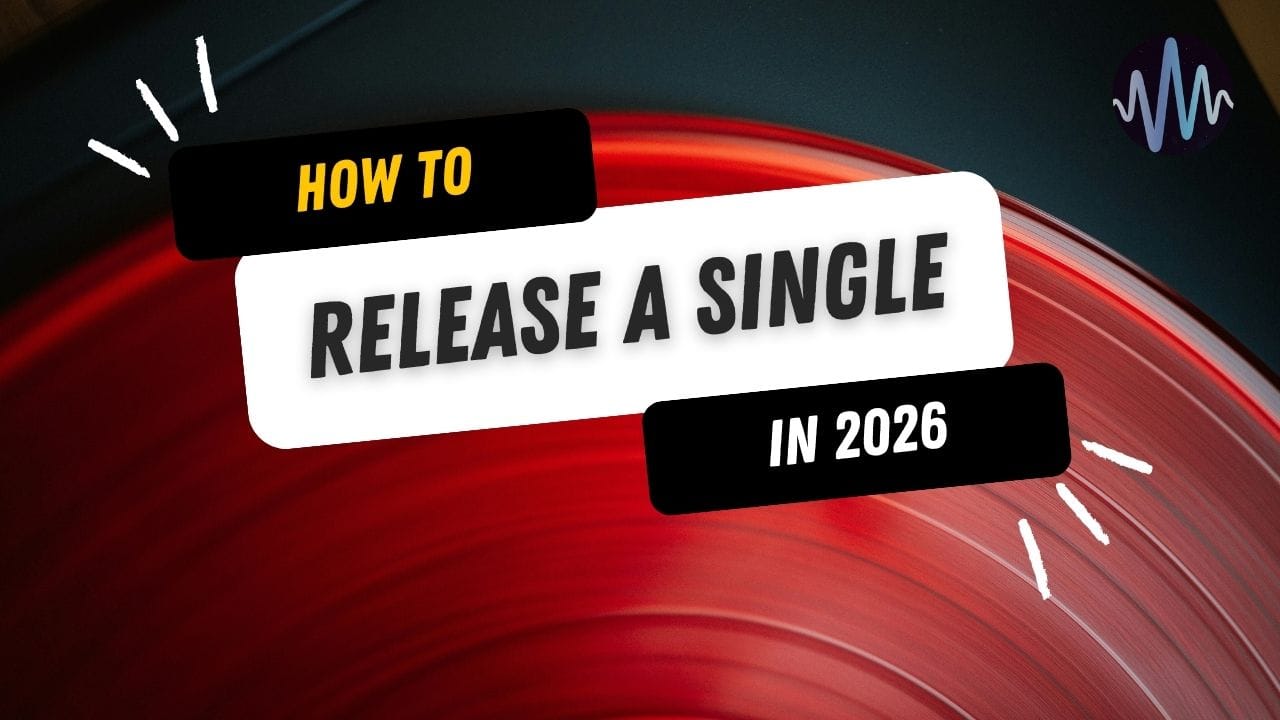
The temptation to go big with beats is strong—cranking up the levels, adding more drums, and piling on instruments.
But what if making tracks sound fuller isn't about adding more stuff, but using texture and layering to create dimension?
Some of the most iconic productions of our time don't just sound loud or busy – they sound vast, deep, and alive with sonic detail.
Let's dig into how texture and layering create that magic, and how you can bring these techniques into your own productions.
Artists Who Use Layering and Texture
Many of the most innovative producers have developed distinctive methods for harnessing texture and layering in their compositions.
The general idea is to think outside of the box formed by drums, basslines, melodies, etc, expanding the sonic palette to implement sounds listeners may not be familiar with or expect.
Skrillex
Skrillex's breakthrough track "Scary Monsters and Nice Sprites" features an unlikely sample – competitive cup stacker Rachael Nedrow. Her excited "Yes! Oh my gosh!" exclamation, sampled from her YouTube channel, became one of EDM's most recognizable audio moments.
What makes this choice so brilliant is how it perfectly punctuates the tension before his massive drop. It’s a human moment of excitement that mirrors exactly what the listener is about to feel when the bass hits.
This tiny textural element became part of his sonic signature, showing how even a single well-chosen sample can define an artist's sound. He even reunited with the girl years after the track was released and is often discussed on social media as a cool piece of EDM history.
Timbaland
Timbaland says he hears music in everything around him. "Life is full of music," he once explained in an interview with Pitchfork. "As soon as you wake up, hearing the trees, that's music. Hearing the crickets, that's music."
This philosophy transformed how he built tracks. The baby cooing sample in Aaliyah's "Are You That Somebody?" was chosen as a rhythmic element that distinguished it from other tracks at the time. Nobody listening to the radio in 1998 could mistake that song for anything else.
Timbaland's genius lies in how he tightly integrates these unusual elements into his beats. The baby sound isn't just layered on top—it's integrated into the fabric of the track, becoming as essential to the groove as any drum hit. This is a really cool example of how brilliant products do more than just drums, bass, melodies, and vocals—even in pop music.
Monte Booker
While other producers hunt for the perfect drum kit, Monte Booker records everyday objects on his portable recorder.
"If everybody's using a hi-hat or an 808, let me try to get a ping or something," he explained in an interview with Bandcamp. “Let me get a different texture, you know, add a little edge to the music. That was always the goal.”
Booker's method questions conventional sounds. Why use a standard hi-hat when you could record the sound of keys jingling? Why use a stock snare when the sound of a book closing has more character?
This commitment to sound design gives his productions for artists like Smino and Ravyn Lenae an immediately distinctive quality. The result is beats that feel both familiar in structure but fresh and surprising in their sonic elements.
Four Tet
Four Tet creates his distinctive sound palette by capturing audio spontaneously, often with just his phone.
In one case, for the song “Lush,” he recorded a Hang drum during a casual visit to his booking agent's house, later transforming this impromptu recording into the foundation for an entire track.
Field recordings provide you with a library of textural elements that no one else has access to. Plus, it gives you an opportunity to juxtapose organic sounds with electronic elements, creating a conversation between natural and digital textures.
Burial
No one creates atmosphere quite like Burial. His tracks combine vinyl crackle, rainfall recordings, and "submerged video game sound effects" into haunting sonic environments.
What sets Burial apart is his rejection of quantized perfection. His percussion isn't rigidly aligned to a grid – it's placed intuitively, creating subtle timing variations that feel eerily human. It’s remarkably ghostly, as if you're hearing echoes of club music rather than the music itself.
And like many of these other examples, it makes his music instantly recognizable as Burial. It also perfectly suits the environments it’s inspired by – atmospheric, dark, moody, gritty. He grew up in South London after all. Enough to sound shivers down your spine on a dark night roaming the city.
Kaytranada
What makes Kaytranada's beats so irresistibly groovy? One secret is his deliberate use of "unquantized notes" – elements placed slightly off the grid to create a laid-back, human feel.
His signature sound pairs syncopated drum patterns with layered drum sounds and deep basslines that move with the drums.
Kaytranada's way with texture is all about creating non-linear tension and movement between elements. Rather than static layers, his productions feature constant interplay between drums, bass, and melodic elements. This dynamic relationship between sounds creates a fullness that's about interaction rather than simply stacking more elements.
In fact, you can barely find a Kaytranada song that doesn’t contain some interesting off-grid layering. And like these other examples, it just hits different – and definitely not as just another disco house producer.
Techniques For Layering Your Tracks
Thinking outside of the classic sonic palette is vital for creating depth and character. It can progress your productions from cutting the same cookie as everyone else to something that makes people think, ‘actually, this is different.’
Here are some hands-on techniques inspired by these artists that you can experiment with in your next production session:
The Ghost Layer Technique
Burial's atmospheric style demonstrates how barely audible elements can transform a track's feeling. Try creating a "ghost layer" – sounds that register more subconsciously than consciously:
- Record room tone in different spaces and add it at 10-15% volume underneath your beat.
- Layer vinyl crackle or tape hiss high-passed at 7 kHz to add subtle texture without muddiness.
- Add distant, heavily reverbed elements that suggest a space beyond what's immediately audible.
- Use field recordings processed to be almost unrecognizable as subliminal texture.
Don’t write off seemingly quiet, almost insignificant textural contributions to your music. The human ear is remarkably good at picking them up, and that alone can pique interest.
Micro-Timing and Human Feel
Kaytranada's loose, groove-centered vibe comes from deliberate timing choices that defy the grid.
While this isn’t textural layering per se, there are some important distinctions here, as Kaytranada's beats create lots of different grooves, not just that classic slack funky feel.
Often, creating groove means moving the snare back off the grid (dragging), but Kaytranada often moves it forward and other elements back, or breaks the classic groove structure altogether to make something unique.
- Shift hi-hats slightly ahead or behind the beat in specific patterns that create forward motion.
- Program kick drums precisely on grid but let other percussion breathe with manual placement.
- Create groove templates from your favorite records by mapping their timing variations.
- Slightly delay certain elements (like snare ghost notes) to create a laid-back feel.
- Mess about with what seems like awkward-sounding shuffles and beats that feel totally out of place – this can create unique grooves you won’t hear anywhere else.
Sound Collection
Expand your sonic horizons with field recordings and samples. If you’re downloading and experimenting with samples (Sample Focus has thousands by the way), then look beyond what the sample is labelled as. Think about how you can manipulate it to be your own.
For field recordings:
- Carry a portable recorder or use your phone to capture interesting sounds you encounter
- Set aside studio time specifically for sound design sessions with everyday objects
- Process conventional samples beyond recognition through extreme pitch shifting and effects
While field recordings are a novelty (not to mention fun to do), they can bridge your tracks with the ‘real world’ that enables them to take on new emotional dimensions.
Emotional Trigger Points
Skrillex's use of the "Oh my gosh!" sample shows how a single well-placed element can enhance a track's emotional impact, becoming a talking point for years to come.
Look for moments where a distinctive sound can act as an emotional trigger:
- Sample dialogue from films that captures a specific feeling your track evokes (beware of copyright, though)
- Record your own vocal exclamations or utterances as personalised impact moments
- Use found sounds that have inherent emotional associations (children laughing, doors slamming)
- Create contrast between synthetic and human elements at pivotal moments in your arrangement
Your track’s ‘sonic trigger points’ often become the most memorable aspects of a track, giving listeners something specific to latch onto emotionally.
Environmental Music Integration
Timbaland's philosophy that "life is full of music" invites us to hear the rhythmic and tonal qualities in everyday sounds. Try incorporating the inherent musicality of the natural environment:
- Record rhythmic elements like traffic signals, construction noise, or kitchen activity.
- Sample melodic elements from birds, wind chimes, or mechanical hums.
- Pay attention to the natural reverb of different spaces and capture it.
- Layer environmental recordings with conventional instruments to create hybrid sounds.
The goal here is to create textures that feel simultaneously familiar and unexpected – that juxtaposition will get people listening and talking. It’s a great philosophy to adopt as a producer.
Finding Your Texture
Developing your own textural toolkit takes both experimentation and critical listening. Think about what unexpected elements to enrich your track.
Can you create impact without relying on the basic elements? Can you add something that truly makes your track stand out within your genre? Is there something that asks listeners to stop and properly listen?
Breaking out of the mould to create truly immersive music often comes down to these textural choices – not just what sounds you use, but how you layer them to create dimension and feeling.
This is where beats transform from simple patterns into worlds that listeners want to return to again and again.
If you're ready to apply some of these textural techniques to your own projects, Sample Focus is the perfect place to start.
With over 6,000 pads and atmospheres in our collection – from subtle ambient textures to evolving soundscapes and field recordings – you'll find plenty of raw material to build your own textural landscapes.
Happy experimenting!





Comments